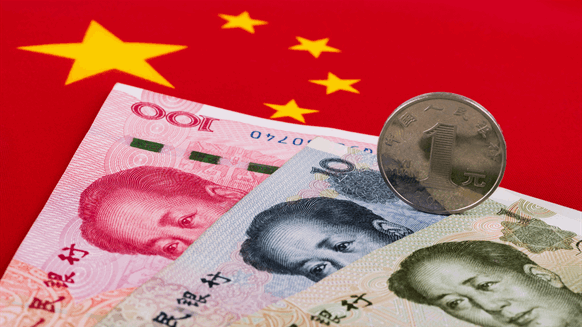China Petroleum & Chemical Corp. (Sinopec) on Friday reported revenue of $482.68 billion (CNY 3.32 trillion) for 2022, up 21.06 percent from 2021, with Sinopec’s local oil and gas equivalent production at its highest level high despite “weak” domestic demand.
However, operating profit fell to $11.03 billion (CNY 75.835 billion) from $13.76 billion (CNY 94.628 billion) year-on-year according to international financial reporting standards, while oil production and the company’s gas at home reached 488.99 million barrels of oil equivalent. Sinopec’s operating profit rebounded in 2021 after falling to $1.99 billion (CNY 13.669 billion) in 2020. In 2019, before the coronavirus pandemic, it posted an operating profit of $12.58 billion (CNY 86.516 billion of CNY).
“In 2022, the company encountered complicated, volatile and severe conditions, including a global economic slowdown, geopolitical conflicts and weak domestic market demand,” Sinopec Chairman Ma Yongsheng said in the annual report of the state company.
The report did not specify the negative factors, but noted: “In 2022, the global economy recorded slow growth and China recorded a GDP. [gross domestic product] growth of 3.0% year-on-year [from 8.4 percent in 2021]”.
“International oil prices fluctuated widely, with a sharp rise in the first half and a notable fall in the second,” Sinopec added. It said Platts Brent for 2022 averaged $101.2 a barrel.
“Affected by various factors, domestic demand for natural gas, petrochemicals and petroleum products was weak,” the report said. Citing data from the National Development and Reform Commission (NDRC), Sinopec said local apparent consumption of natural gas fell 1.7 percent to 366.3 billion cubic meters from 2021. Meanwhile, apparent consumption of Refined oil rose 0.9 percent, sliding 10 times and rising 13 times. in the 23 times prices were adjusted, the company said, citing the same source.
The International Energy Agency (IEA) pinned weaker gas consumption in China last year on “slowing economic growth, price-driven demand destruction and widespread gridlock under tight China’s Zero-Covid Policy”.
“It represented the first annual decline in Chinese gas consumption in four decades,” the IEA said in its gas market report for the first quarter of 2023.
“Combined industry and energy sector consumption recorded a small decline as a result of high prices and Covid-related disruptions, while the city gas segment experienced modest expansion thanks to growing gas penetration and weather effects (with degree days of heating across the country by 16 percent and degree days of cooling increased by one percent compared to 2021), the IEA added.
On the positive side, oil and gas equivalent production hit a new all-time high. “The replacement ratio of domestic oil and gas reserves rose to 165 percent, with domestic production of oil and gas equivalents hitting a new record high and profits hitting their best level in a decade” , said the annual results report, which Sinopec said had been audited by KPMG Huazhen. LLP and KPMG.
However, refinery throughput fell 5.1 percent to 242.27 million metric tons in 2022 from 255.28 million metric tons in 2021. Sinopec produced 140.15 million tons metric tonnes of diesel, petrol and kerosene last year from 146.21 million metric tonnes the previous year.
It had 8.806 trillion cubic feet (Tcf) of proven reserves and 7.138 Tcf of proved developed reserves by the end of 2022, according to the report.
Expected increase in demand, prices
“Looking forward to 2023, China is expected to achieve an overall upswing in economic performance. Domestic demand for natural gas, refined products and chemicals is expected to grow rapidly,” Sinopec said. “The international price of crude oil is expected to fluctuate at medium and high price levels due to the impacts of changes in global supply and demand, geopolitics and inventory.”
It plans to produce 280.23 million barrels of crude oil and 1.2918 million cubic feet of natural gas this year.
“Throughout the year, the company plans to process 250 million tons of crude oil and produce 146 million tons of refined petroleum products,” the report added.
Sinopec plans to spend $241.05 million (CNY 165.8 billion) in capital spending in 2023, down from $274.92 million (CNY 189.1 billion) last year.
Risk due to environmental concerns
“The company’s business results are closely related to the macroeconomic situation,” the report notes.
“The development of the economy is increasingly constrained by climate change and environmental issues. The company’s business could also be adversely affected by other factors, such as the impact on exports due to carbon tariffs and the trade protectionism of some countries, and the negative impact on investment of overseas oil and gas exploration and development projects and chemical refining and storage resulting from geopolitical uncertainty, the international price of crude oil, etc.
Sinopec has acknowledged that its production activities generate pollution, but added that it has built risk prevention and control facilities.
“However, relevant government authorities may issue and implement much stricter environmental protection laws and regulations, [and] adopt much stricter environmental protection standards,” he said. “In such situations, the company may increase expenses related to environmental protection accordingly.”
Chinese restrictions on global oil and petrochemical trade also include “quality standards and environmental protection and the formulation of energy conservation policies; restrictions on projects with high energy consumption and high pollution”, added Sinopec.
To contact the author, please send an email jov.onsat@gmail.com
Photo credit – iStock.com/Max Zolotukhin


